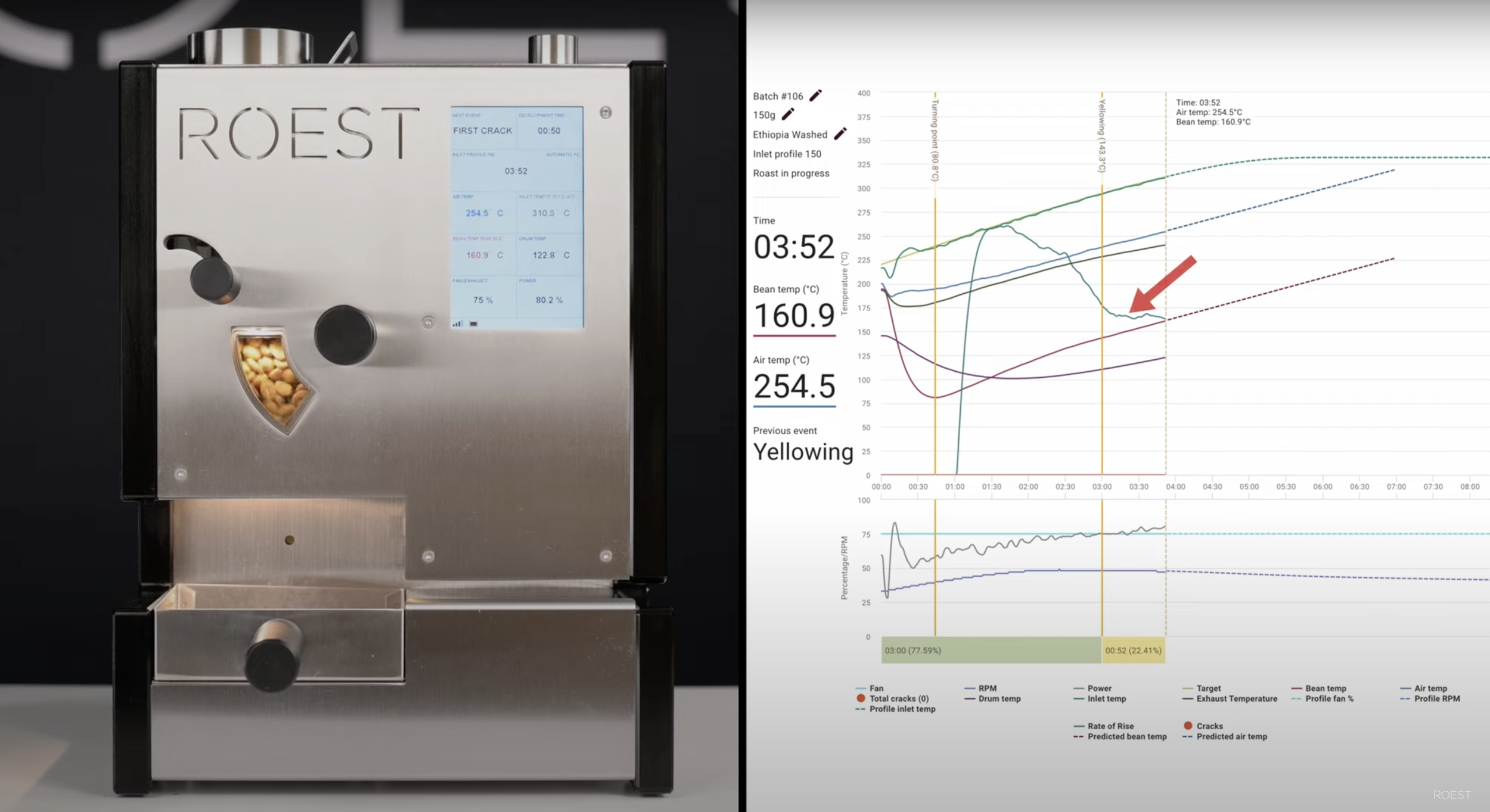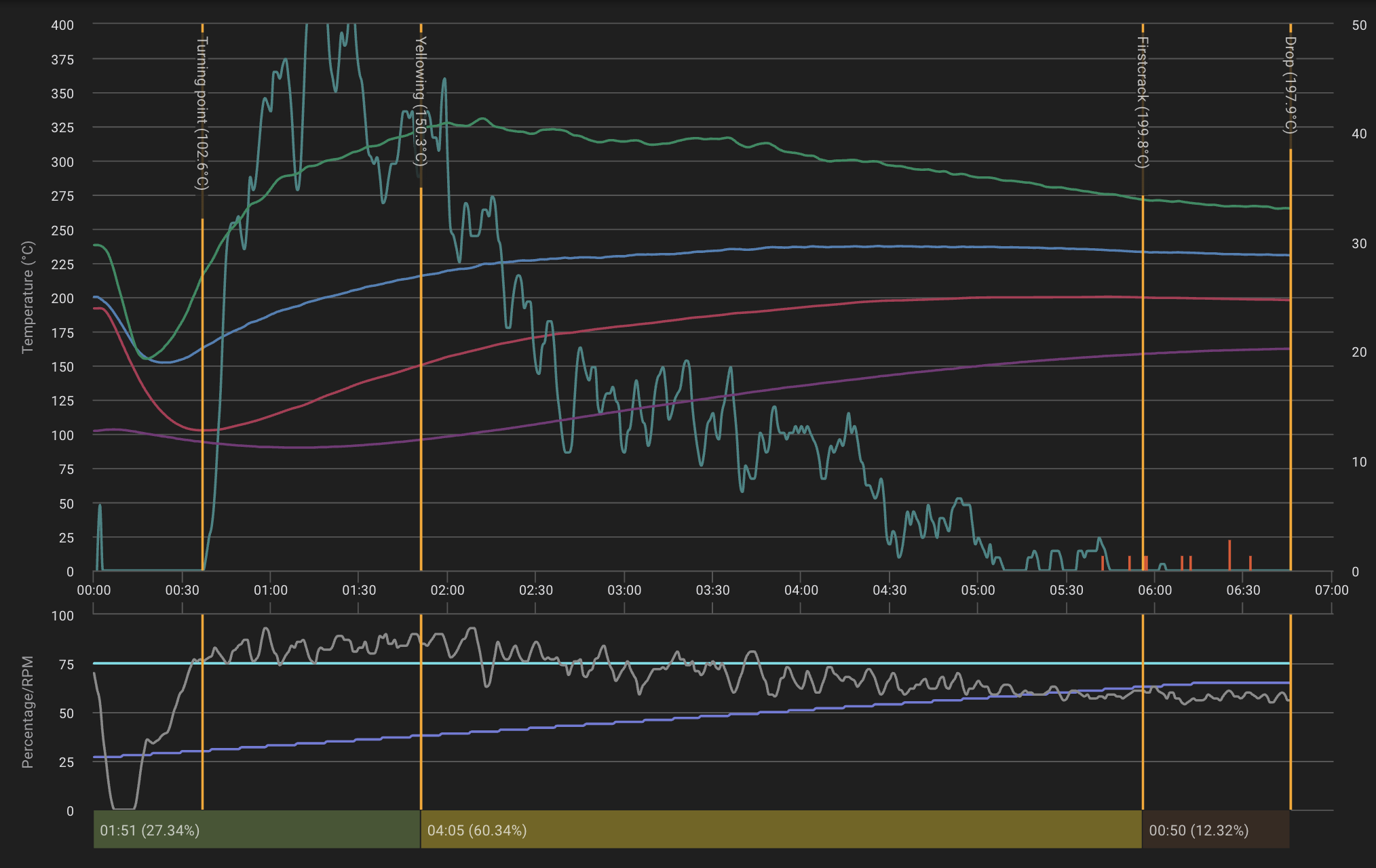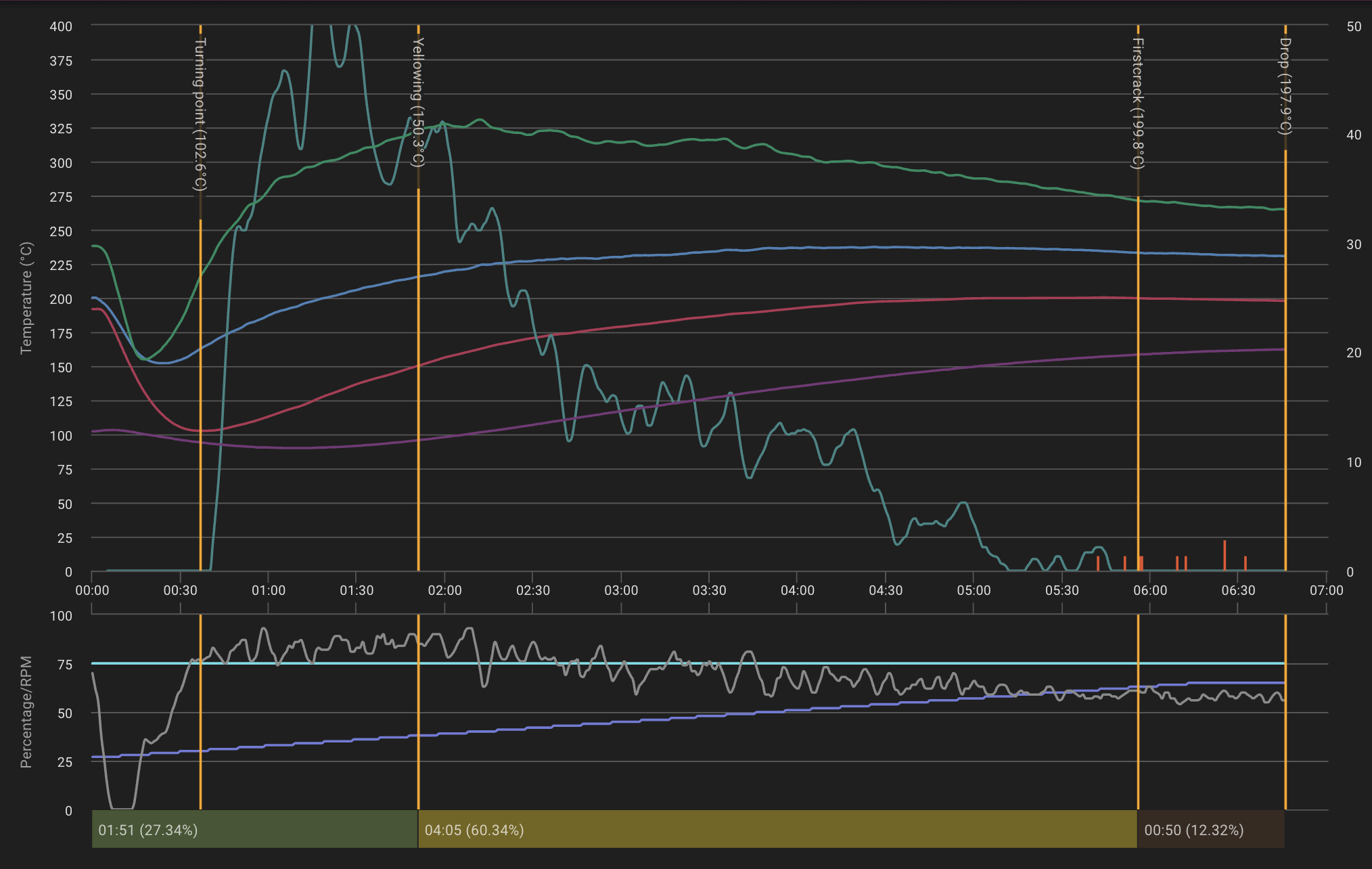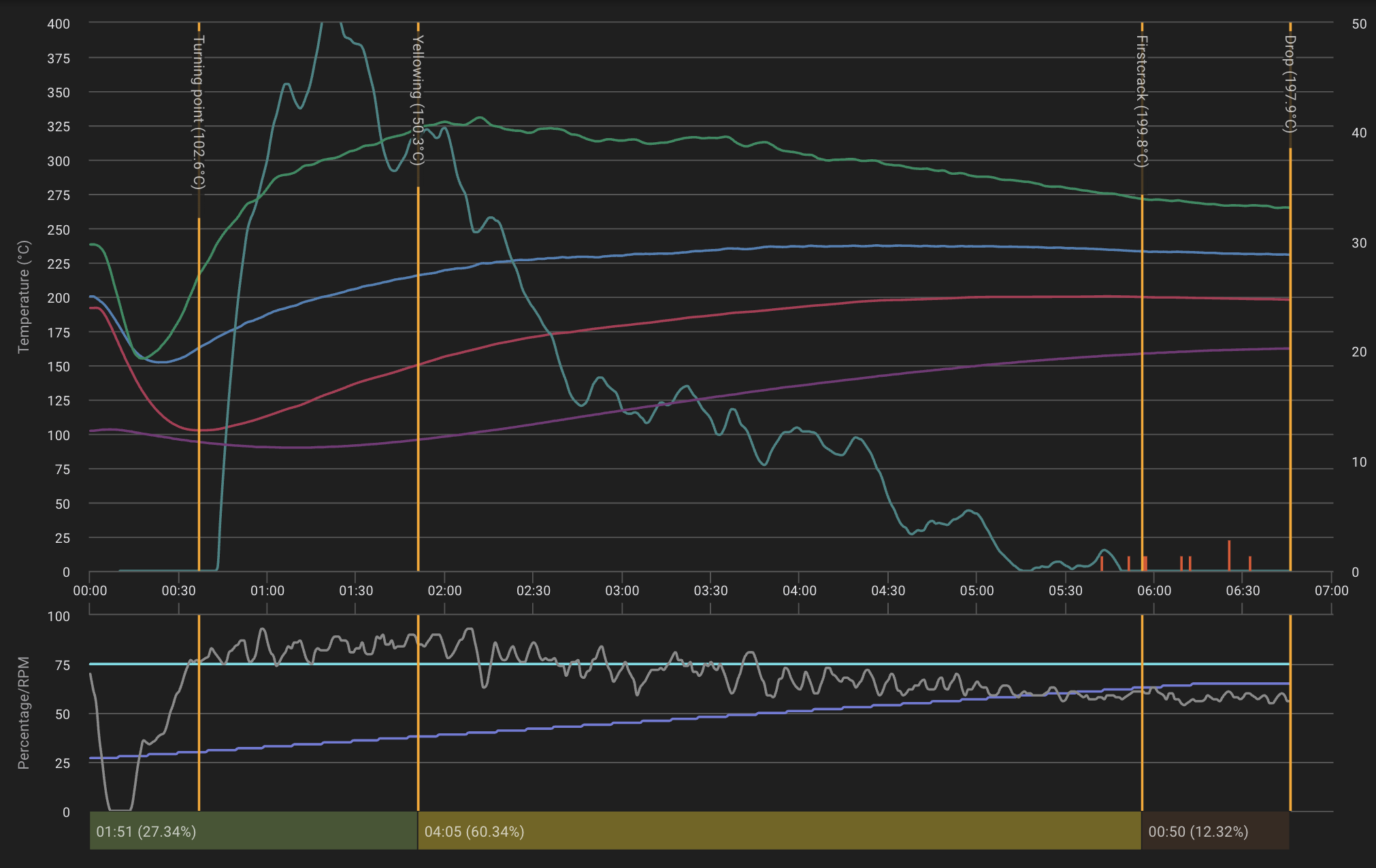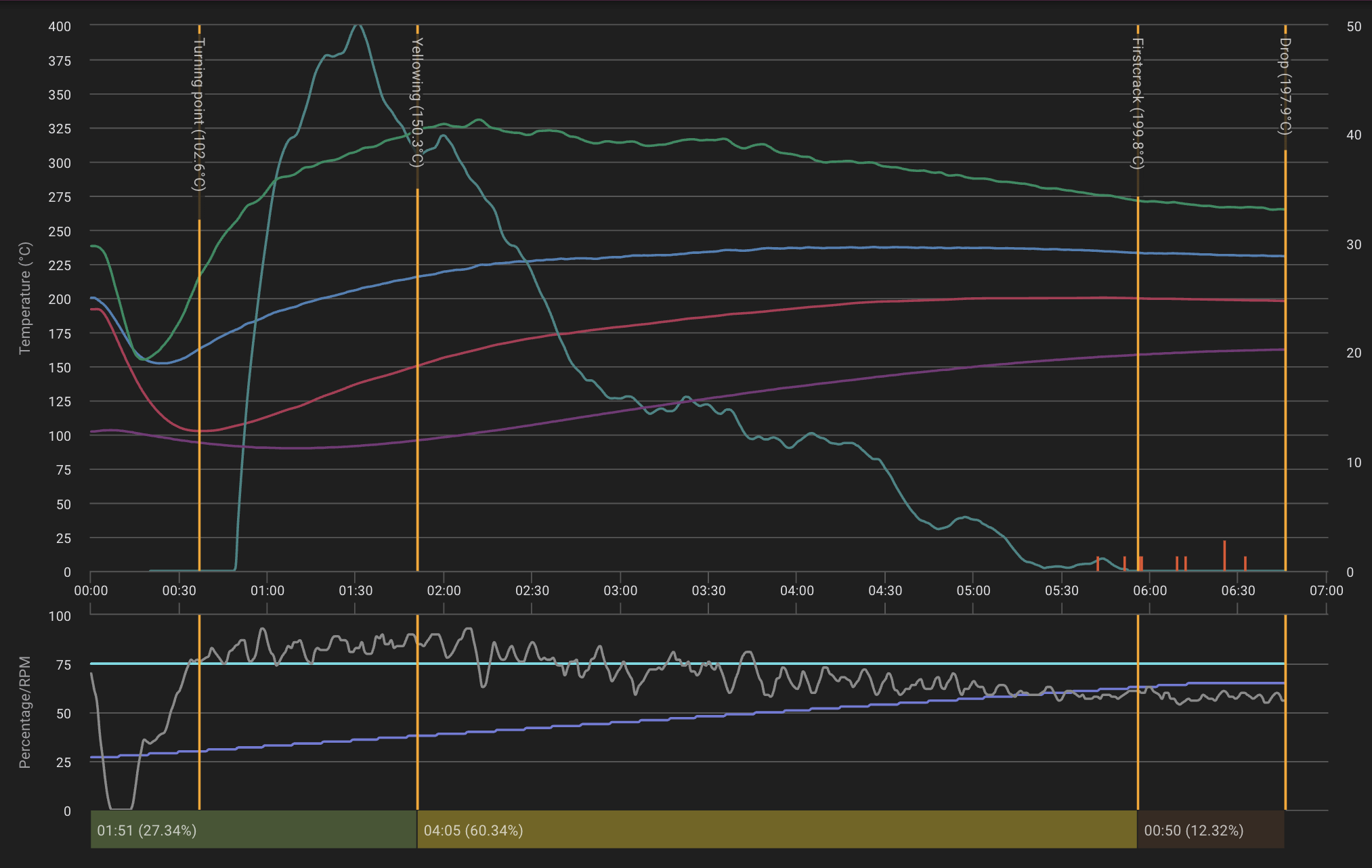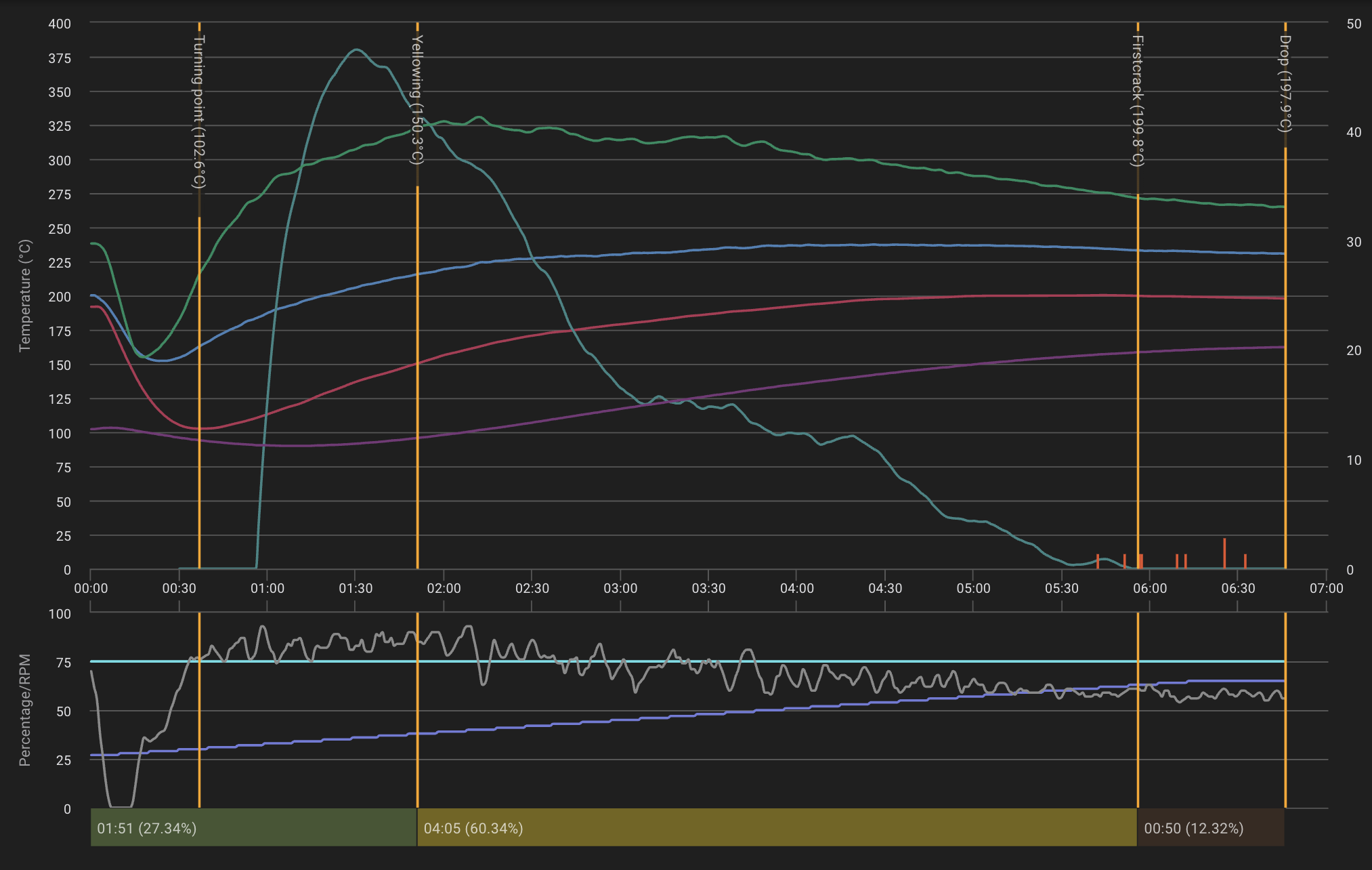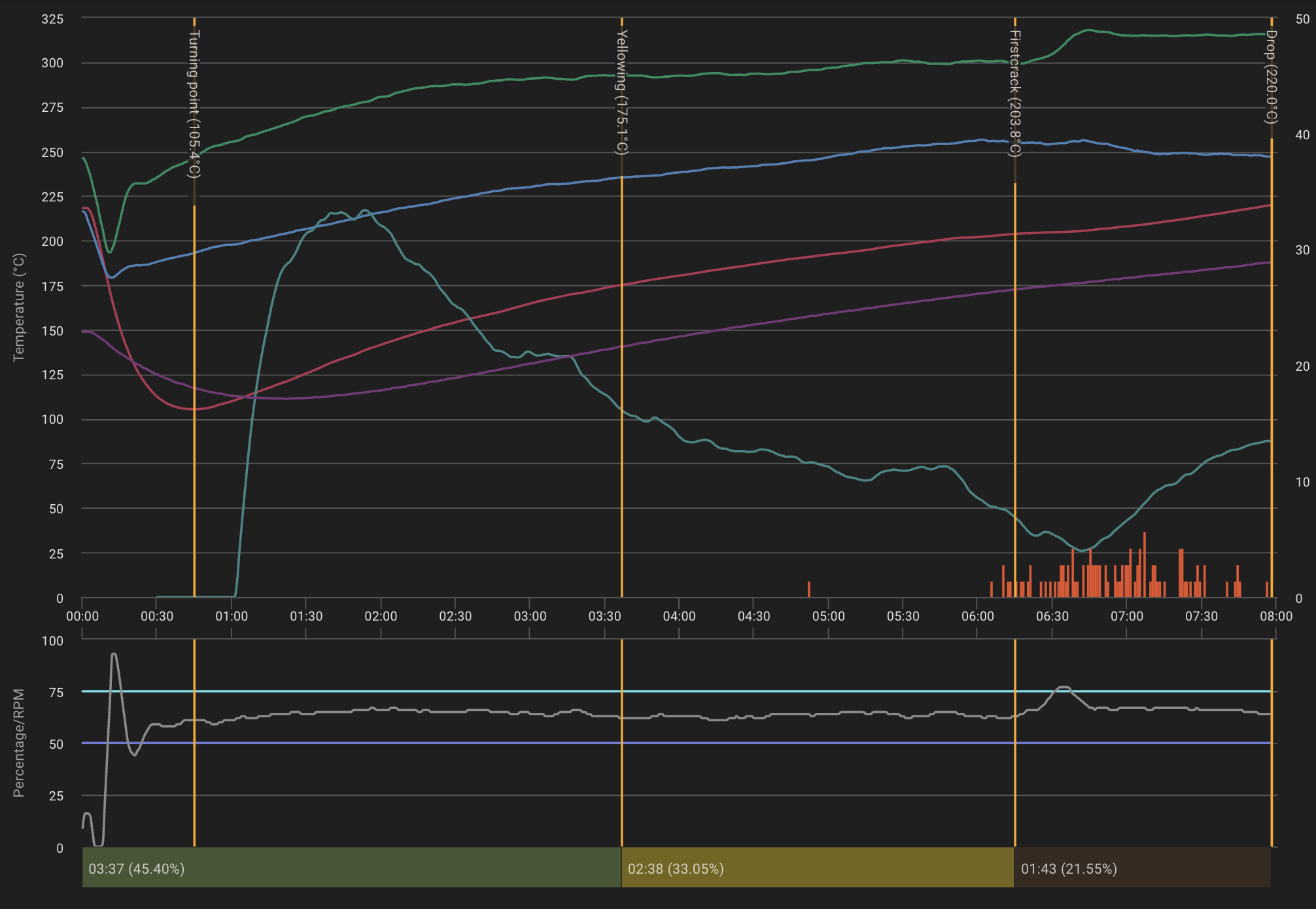Mastering the Art of Coffee Roasting: Rate of Rise
Behind every exceptional cup of coffee lies a meticulous process of roasting. Paying attention to details during the roasting process is paramount. One crucial parameter to control and achieve optimal results is the Rate of Rise (RoR). In this article, we will explore the concept of RoR, its significance in coffee roasting, how to calculate it, and its relevance at different stages of the process. Understanding and harnessing the power of RoR can elevate your coffee roasting skills and help you consistently create exquisite flavors.
ROEST sample roaster and the web portal, where you can monitor the live roast and RoR.
Understanding the Rate of Rise
Rate of Rise (RoR) measures the speed at which the temperature of the coffee bean rises during the roasting process. It is a crucial metric that indicates the rate at which the beans absorb heat from the roasting machine. It is essential to distinguish RoR from the actual temperature of the bean. While the temperature measures the current state of the bean, RoR measures how quickly that temperature changes.
Roasters gain valuable insights into the roasting process by analyzing the RoR data plotted on a roast graph. Roast curves visually represent the temperature changes over time. RoR provides a dynamic view of the bean's temperature increase, enabling roasters to make timely adjustments and achieve consistent roast profiles. It empowers them to maintain control, anticipate changes, and avoid potential mistakes that could impact the flavor and quality of the final cup of coffee.
Calculating the Rate of Rise
Modern roasting technology, accompanied by specialized software, simplifies collecting RoR data. These software tools enable roasters to capture temperature data at different intervals, such as 1, 5, 10, 15, 20, 30, or 60 seconds. The choice of the time interval depends on various factors, including the specific roasting machine and the desired level of precision.
Different graphs from the ROEST sample roaster showing how the RoR looks in various time settings.
When selecting the appropriate time interval, it is crucial to consider the trade-off between precision and noise. A shorter interval provides greater accuracy but can introduce more noise into the data due to system interference and sensor fluctuation. This noise may lead to a graph with numerous spikes, making it challenging to analyze. On the other hand, a longer time interval produces a smoother curve with fewer spikes but at the expense of finer details.
For people using roasters with high idle noise or system interference, it is advisable to opt for a higher time interval, such as 60 seconds, when calculating RoR. This choice results in a smoother roast curve that is easier to interpret. However, shorter time intervals can be chosen for more precise analysis for those using advanced roasting technology with minimal noise.
If you are starting in coffee roasting and cannot access specialized software, you can still calculate RoR manually. The process involves measuring the temperature at regular intervals, such as every 30 seconds or every minute, and calculating the temperature difference between consecutive readings. This simple approach lets you gain insights into the RoR during roasting.
Ideal Rate of Rise Guidelines
While no ideal RoR suits all scenarios, there are specific guidelines to consider when controlling RoR to achieve consistent and balanced roast profiles. These guidelines consider various factors, including the coffee bean type, roasting profile, stage, and altitude.
A pronounced drop in RoR, also known as a "crash," especially around the beginning of the First Crack, can lead to undesirable outcomes. When the RoR drops significantly, the coffee may transition from roasting to baking, resulting in a flat, bland flavor profile with minimal sweetness and a cardboard-like taste. This phenomenon is commonly referred to as "baked coffee." To prevent this, it's important to have a steadily decreasing Rate of Rise (RoR) during the roasting process and ensure that the temperature increases gradually.
Graph showing the “crash” in the RoR on the ROEST sample roaster.
Conversely, a low and steady RoR maintained over an extended period can benefit denser coffee beans. It allows them to break down and develop their flavors to their fullest potential. This controlled approach ensures that the heat penetrates the beans evenly, producing a balanced and vibrant cup of coffee.
“A good roast is achieved when there is a continually decreasing RoR.”
On the other hand, a rapid RoR, especially in the final phase of roasting, can have detrimental effects. When the RoR moves too fast, the coffee beans take on the heat too quickly, losing complexity and an unpleasant burnt taste. This outcome is commonly known as "scorched coffee." To prevent this, monitoring the RoR closely and adjusting to maintain a steady and controlled rise in temperature is crucial.
Significant Stages of RoR
Throughout the roasting process, there are three critical moments where the Rate of Rise requires particular attention:
Maximum RoR: This occurs after the "turning point," which marks the transition from negative RoR to positive RoR. The turning point is the moment when the bean temperature stops dropping. After this point, the RoR experiences its highest rate of temperature increase. Monitoring the Maximum RoR allows roasters to gauge the intensity of the roast and make necessary adjustments.
First Crack RoR: The First Crack is a significant stage in coffee roasting when the beans release moisture and emit cracking sounds. The RoR may drop during this phase due to the water vapor released from the beans. Monitoring the RoR during the First Crack helps understand the moisture release and its impact on the roast.
End RoR: Towards the end of the roasting process, the beans become drier and more fragile. The RoR at this stage requires careful observation to prevent over-roasting or unevenness. The End RoR signifies the delicate point where the beans are susceptible to breakage, and fine adjustments can make a substantial difference in the final cup quality.
Understanding and harnessing the power of the Rate of Rise (RoR) is a crucial aspect of mastering the art of coffee roasting. By accurately controlling and interpreting RoR data, roasters can consistently achieve exceptional roast profiles, avoid undesirable outcomes, and continually refine their skills to create the perfect cup of coffee.
Enjoyed reading this? Check out our article on why you need a sample roaster for your coffee business.

